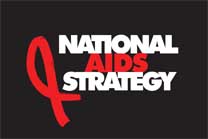 The Mapping Pathways United States Workshop Report is launched today, providing the results of three HIV prevention scenario-development workshops held in 2013 in the United States.
The Mapping Pathways United States Workshop Report is launched today, providing the results of three HIV prevention scenario-development workshops held in 2013 in the United States. The "Community-driven strategies for the use of antiretrovirals as prevention: United States Workshop Report" analyses, aggregates and synthesises different factors, issues, and drivers identified by workshop participants and constructs a future scenario for HIV prevention strategies using ARV (antiretroviral) drugs in the United States. Integration - of factors and systems involved in both treatment and prevention - is the main driver of success.
We hope you will read the report and utilize it in your organizational/jurisdictional planning processes for HIV prevention and care services. Please share the report with colleagues you think will be interested.
In 2013, a subset of the Mapping Pathways team conducted knowledge-exchange workshops in San
 |
| Atlanta workshop participants |
The cities were selected based on geographic diversity as well as the diversity of experience and expertise that can be found in each setting.
All three workshops included a mix of approximately 20 researchers, advocates, policy experts, public health officials, and service providers; they were diverse in terms of age, race, gender identity, sexuality, sero-status, and years in the field, with a blend of local to national experiences and perspectives.
Participants collaboratively developed a range of future scenarios and potential strategies linked to prevention programming goals and objectives. They were asked to think ahead to the year 2025, and envision an array of outcomes associated with the implementation of ARV-based prevention.
Based on participant ideas and concepts synthesised across all three workshops, we developed a ‘Mapping Pathways’ scenario for the future which has a strongly integrated approach at its core. The main driver of this future scenario is one of integration across political, economic, social, educational, and technological factors, and integration across the broader scientific, healthcare, and delivery systems. This means that we integrate both treatment and prevention strategies, including how we develop them, how we fund them, and how we deliver them, into one holistic approach.
 |
| Political and economic factors considered by workshop participants |
The Mapping Pathways scenario was informed by these key themes common to all the workshops:
• Participants emphasised the need for a more holistic approach to HIV services in which prevention and treatment were not seen as mutually exclusive.
• Social and behavioral research must be supported and integrated with biomedical research.
• Digital web and device-based technologies and information sharing will affect access, uptake, and adherence.
• The Affordable Care Act (ACA) offers major opportunities for expanding access to healthcare, and poses challenges in HIV prevention and care delivery as the landscape evolves.
• Community-based organizations have a leading role to play in the new healthcare paradigm being ushered in with the ACA. They can help generate political will, drive research agendas, and deliver integrated care to communities and populations in need.
• Diversified funding streams are needed, and many of the optimistic scenarios generated by participants included strategies to engage a wide range of funders.
Click here for the United States Workshop Report.
[Please look for us on Facebook here www.facebook.com/MappingPathways and you can follow us on Twitter @mappingpathways as well.]















